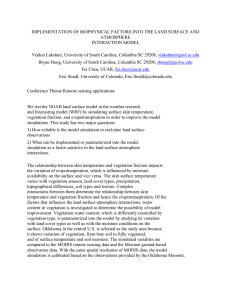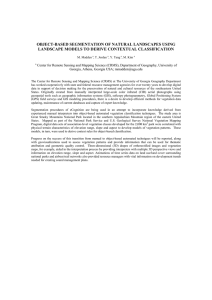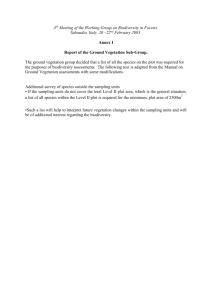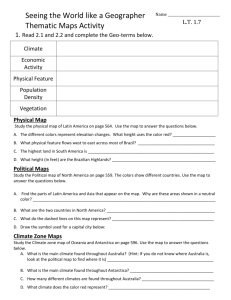Simulating vegetation change, carbon cycling and fire over the
advertisement
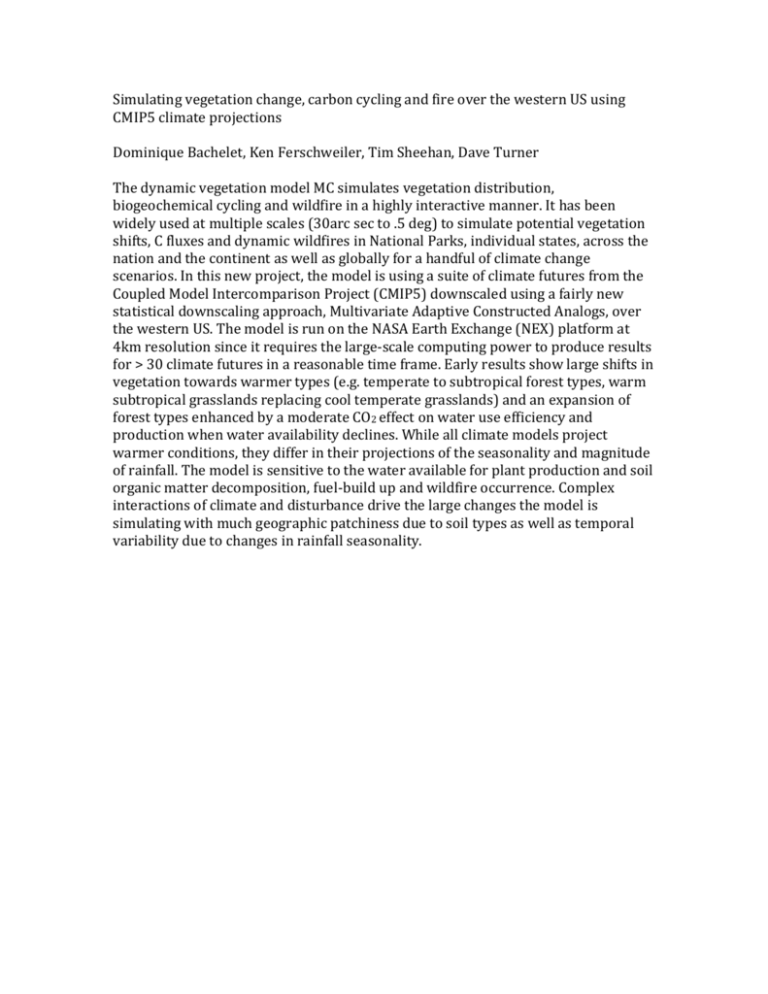
Simulating vegetation change, carbon cycling and fire over the western US using CMIP5 climate projections Dominique Bachelet, Ken Ferschweiler, Tim Sheehan, Dave Turner The dynamic vegetation model MC simulates vegetation distribution, biogeochemical cycling and wildfire in a highly interactive manner. It has been widely used at multiple scales (30arc sec to .5 deg) to simulate potential vegetation shifts, C fluxes and dynamic wildfires in National Parks, individual states, across the nation and the continent as well as globally for a handful of climate change scenarios. In this new project, the model is using a suite of climate futures from the Coupled Model Intercomparison Project (CMIP5) downscaled using a fairly new statistical downscaling approach, Multivariate Adaptive Constructed Analogs, over the western US. The model is run on the NASA Earth Exchange (NEX) platform at 4km resolution since it requires the large-scale computing power to produce results for > 30 climate futures in a reasonable time frame. Early results show large shifts in vegetation towards warmer types (e.g. temperate to subtropical forest types, warm subtropical grasslands replacing cool temperate grasslands) and an expansion of forest types enhanced by a moderate CO2 effect on water use efficiency and production when water availability declines. While all climate models project warmer conditions, they differ in their projections of the seasonality and magnitude of rainfall. The model is sensitive to the water available for plant production and soil organic matter decomposition, fuel-build up and wildfire occurrence. Complex interactions of climate and disturbance drive the large changes the model is simulating with much geographic patchiness due to soil types as well as temporal variability due to changes in rainfall seasonality.





